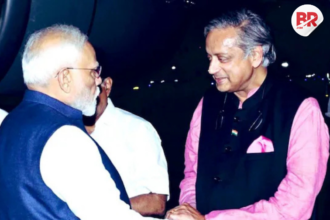
Shelling by the Pakistani Army in Jammu and Kashmir’s border areas killed 15 civilians, including four children, and injured 57 others on Wednesday, officials confirmed.
The Poonch district was hit the hardest, with entire families caught in the attack.

The violence comes after India launched Operation Sindoor, a targeted strike on terror infrastructure in Pakistan and Pakistan-occupied Kashmir (PoK).
It wasn’t random—it was retaliation for the recent Pahalgam terror attack, which had already shaken the nation.
India didn’t start this. But it sure as hell won’t stay silent either.
Also Read Rafale vs F-16: How India Outshines Pakistan’s Military
A Night of Terror in Poonch
Shells rained down across Balakote, Mendhar, Mankote, Krishna Ghati, Gulpur, and even near the Poonch district headquarters. Civilians were asleep when the shelling began. By dawn, homes were flattened, vehicles burnt, and lives lost.
Ten people, including five children, were wounded in nearby Rajouri. In Kupwara’s Karnah sector, houses caught fire from the blasts.
This marks the 13th consecutive night of unprovoked firing from Pakistan, proving once again that when it comes to breaking ceasefires, Pakistan has a PhD in provocation.
India Responds with Firepower and Precision
Hours after the attack, the Indian Army retaliated fiercely, destroying multiple Pakistani posts responsible for the shelling. According to PTI, Indian forces inflicted “significant casualties” on the enemy side.
This was no vague show of force. It was a calculated, surgical response—under Operation Sindoor—aimed specifically at terrorist launch pads and training sites in PoK and Pakistan.
Think of it as India’s version of sending a “read receipt” but with missiles.
Schools Shut, Tensions High
With tensions escalating, all schools and colleges in Jammu, Samba, Kathua, Rajouri, and Poonch have been ordered shut. District authorities are on high alert.
Meanwhile, mock emergency drills were held nationwide, as per orders from the Ministry of Home Affairs, simulating rapid responses in case of further escalation. It’s not paranoia—it’s preparedness.
Also Read India’s Operation Sindoor: A Masterclass in Strategic Retaliation Against Terror
A Pattern of Provocation
Let’s call it what it is: the Pakistani Army is using civilians as pawns in a geopolitical tantrum. They target border villages to draw sympathy internationally, but forget—India doesn’t play by that script anymore.
This isn’t 1999. This is Modi’s India—and we don’t wait for UN resolutions when our kids are dying. We respond. Loudly.
Pakistan cries victim to the world, but the shells falling on Indian soil aren’t “self-defense.” They’re signatures of a state that refuses to dismantle its terror factories.
It’s almost poetic—how the Pakistani Army, once hailed by its establishment as the “guardian of national pride,” now finds itself triggering global embarrassment with every round of unprovoked shelling.
India, meanwhile, fights two battles: one at the LoC, and one in international diplomacy—where credibility matters, and restraint speaks louder than rockets.
India is not the aggressor. But it will never be the victim in silence. The message from Operation Sindoor is clear: You hit us—we hit back harder.
Also Read Indian Fighter Jets “Shot Down”? Pakistan’s Defence Minister Thinks Tweets Are Evidence












